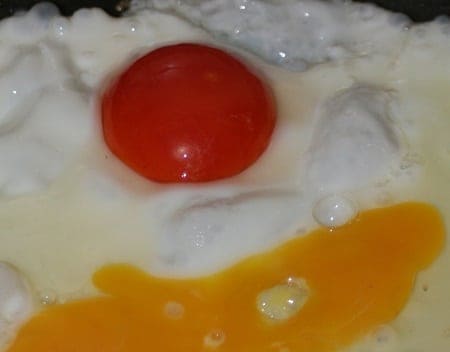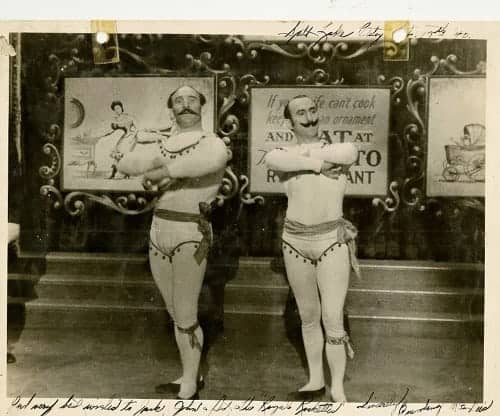11 Serious Answers To Mind-Blowing Pinoy Questions

Curiosity leads to discovery. I realized this when my younger self started asking questions like “Why is the sky blue?” and“How do fish breathe in water?”
They may sound too simple now, but for someone who had limited knowledge of how things work and why, the answers I got were enlightening.
Also Read: 7 Amazing Pinoy Trivia Guaranteed To Make You Say ‘WOW!’
And then adulthood came into the picture. The time I would have spent figuring out petty things were now invested in finding jobs or doing things that make money. The same curiosity that led me to the science of how rainbows form had to take a back seat. Which kinda sucks, especially now that answers even to the most absurd questions are just a few Google searches away.
But now I have been given the opportunity to answer those questions myself–questions you probably once asked but never found the answers to. So, to pay tribute to our childhood curiosity, I have listed down some of the most mind-boggling Pinoy questions and the answers you never knew you needed to know.
1. Do worms get eaten by other worms when they die?

You know you’re looking at a decomposing body when there are worms feasting on its rotten flesh. And by worms, I mean maggots or larvae of flies which for some reason find the putrid-smelling dead bodies appetizing.
These worms do a terrific job of eating dead tissues away–so much so that some surgeons even use maggots to aid in wound healing (they call it maggot treatment). Now, if these maggots eat dead organisms, do they do the same to their own kind?
While fruit fly maggots have a tendency to go on a cannibal mode when they’re short in the food supply, the same phenomenon is unheard of among species of flies (e.g. blowflies and flesh flies) involved in body decomposition. These worms/maggots don’t eat one another while they’re alive, let alone feed on each other’s carcass.
Also Read: Top 10 Most Bizarre Filipino Foods
The same thing is true for other worms in the Animal Kingdom. Earthworms, for example, are composed mostly of water so when they die, their bodies decompose so quick you won’t even notice their remains. Either they end up being eaten by ants or consumed by microscopic decomposers such as bacteria.
The bacteria-assisted decomposition of earthworms produces “humus” which increases the nitrogen content or the nutritional value of the soil. In fact, dead earthworms can produce up to 1,000 lbs. of nitrogen per acre per year in a highly organic soil.
2. Why was “Babuyan Islands” named as such?

Sailors who operate cargo pump boats across the Babuyan Channel (which separates Babuyan from the rest of Luzon) usually carry with them a pig as a good luck charm. It is said that it was how the archipelago got its name. But since Babuyan is too far and too risky for me to explore, I’m in no position to confirm that story.
Thankfully, a simple library research gave me some answers. According to a book by Dominican priest Julio Gonzales, who had the patience to explore the history of the northernmost islands of the Philippines, Babuyan Islands got its name from one of its own. In other words, neither Miss Piggy nor Piglet had nothing to do with the name origin.
READ: 9 Interesting Facts You Might Not Know About Batanes
Just to refresh your geography knowledge, Babuyan has five major inhabited islands, namely: Fuga, Dalupiri, Camiguin, Calayan, and the Babuyan Island (its namesake; also called Babuyan Claro or Curuga-Babuyan).
Among these five, Curuga-Babuyan is the highest and northernmost island. It is also the most visible from Luzon and Batanes (where it is known by the natives as Mabalbal or “Burning Island,” in reference to its semi-extinct volcano). And that explains why the island was named as such: Curog (or Claro in Spanish) means “clear” while Babuyan is said to have evolved from “mabuy” or “mabuyan” which means “to see; a place which is seen.”
Eventually, the island group adopted the name of Curuga-Babuyan and became known as Babuyanes (which literally means “the places which are seen”). It is simply known today as Babuyan Group of Islands.
3. Why do Filipinos call it “pula ng itlog” when the color of the egg yolk is mostly yellow?

The color of the egg yolk depends on the hen’s diet. A yellow egg yolk simply means that the chicken where it came from was fed with commercial poultry feeds rich in yellow pigments (which is usually the case).
Now, change what the chicken eats and you’ll end up with egg yolks with deeper colors, varying from orange to red. Therefore, contrary to popular belief, ‘red’ egg yolks do exist. And this is one proof:

Egg yolks with such deeper color may not be widely available now, but they were the norm before the 20th century. Remember, commercial chicken feeds wouldn’t enter the market until the 1910’s. Prior to that, our ancestors raised ‘free-range’ chickens in their own backyards, let them roam around and thrive on a natural diet consisting of insects, plants, corns, rice grains, earthworms, and even garden wastes.
As a result, these chickens laid organic eggs with deep-colored yolks rich in xanthophyll and omega-3 fatty acids.
Also Read: 3 Pinoy Expressions With Crazy Origins You Would Never Have Guessed
The term “pula ng itlog” was probably coined during this era when the colors of the egg yolks were as varied as the chicken’s diet. Reddish yolks, in particular, may also be the direct result of feeding chickens with red chili peppers containing capsanthin, a red coloring factor.
As for their nutritional value, a study by Pennsylvania State University reveals that organic eggs–as opposed to eggs from commercial poultry farms–contain higher levels of vitamins A, D and E; more beta-carotene; and more omega-3s.
4. Why is a boxing ring called a “ring” even though it is square?

Boxing has always been about fist fighting. Its alternative name, “pugilism,” evolved from the words pugnus, a Latin word for “fist”; and pyx, a Greek term which means “with the clenched fist.” The Sumerians left behind relief carvings suggesting that they engaged in a crude form of boxing as early as 3rd millennium BCE.
The sport soon reached the Ancient Greeks who made fighting a part of the Olympic Games in 688 BCE. For the Romans, however, fist fighting took the form of a bloody sport where participants often fought each other until death.
Back then, the “boxers”–who were often slaves–fought within a circle marked or drawn on the floor, and from which the present-day “boxing ring” supposedly got its name. There were no formal rules for the sport during those days and the Roman boxers would often wrap their fists with thongs embedded with sharp metals. As expected, Roman boxing became so brutal that the sport was abolished in 393 AD.
Also Read: 8 Thrilling Facts You Didn’t Know About ‘Thrilla in Manila’
Boxing resurfaced in London in the 17th century. This time, the sport was pursued as a money-making endeavor, hence the name “prizefighting.” An Englishman named Jack Broughton created the first set of rules for boxing in 1743, which then paved the way for the London Prize Ring rules in 1838. It was the latter that first introduced us to the square and roped “boxing ring” we know today.
5. Why is a “blackboard” colored green?

Depending on what you read, the first blackboard was created by either James Pillans in 1800 or George Baron in 1801. The former was a headmaster of the Old High School of Edinburgh, Scotland while the latter was a mathematics teacher from West Point. In order to illustrate their lessons in front of a large audience, both came up with a large writing board by putting several smaller erasable slates together.
Also Read: 8 Amazing Facts From Philippine History You Never Learned in School
The term “blackboard,” on the other hand, did not appear until 1815. By this time, blackboards literally meant writing boards painted in black. Homemade versions were usually pine boards connected together and covered with egg whites and the carbon leavings from charred potatoes. Their commercial counterparts, coated with black porcelain-based paint, became popular by 1840.
Some folks soon realized that blackboards were not as easy on the eyes and the chalk couldn’t be erased completely off the paint. In the end, the black became green. By the 1960s, blackboards with green paint replaced the traditional boards that came before them. However, we were so used to calling them “blackboards” that we never even bothered to replace it with something technically correct.
6. In the Filipino version of ‘Hail Mary,’ why do Catholics use the male term “Ginoo” to address Mary?

Believe it or not, there was a time when Filipinos used “Ginoo” as a title of respect, regardless of the person’s gender. This was how the word was used shortly after the Spanish colonizers arrived in the Philippines up until the 19th century.
Also Read: 30 Filipino Words With No English Equivalent
Therefore, it should come as no surprise that when the Spaniards translated “Dios Te Salve Maria” into the native language, “Ginoo” was used to honor Mary as the mother of the Savior Jesus Christ. It was only in the 1900’s when the word “Ginang,” now the female counterpart of “Ginoo,” first appeared in the dictionary.
7. How come that there’s no Mercury Drug Store in all SM malls?

The problem with urban legends is that gullible folks tend to believe them. Such has been the case of Mercury Drug and the alleged reason why you can’t find a single branch of the drugstore inside SM Supermalls.
The story goes something like this: Henry Sy, a struggling Chinese-Filipino businessman in the 1950’s, thought of starting a shoe store. As a strategic man, he approached Mercury Drug if they could let him rent and occupy a space in their store to help him sell his shoe products. The drugstore rejected his proposal.
READ: 9 Creepy Pinoy Urban Legends That Never Get Old
In a twist that you usually see on primetime soap opera, Sy threw a tantrum and promised to his self that once he succeeds, not even a shadow of Mercury Drug would enter his store. As we all know, Mr. Sy fulfilled his dreams and is now the country’s richest man alive.
As for Mercury, the drugstore has been rejected over and over again by the SM founder, who favors Watsons over the local brand. Or so the story goes.
But nothing can be further from the truth. As revealed by no less than Henry Sy’s daughter, Shoemart Inc. head Tessie Sy-Coson, the real reason why there is no Mercury Drug in SM malls is more straightforward than we thought. In a 2002 article in the Philippine Star, she said that his father Henry Sy and Mercury Drug’s Mariano Que are good friends and the “only reason why there is no Mercury Drug in the SM malls is that we could not agree on the rental rates in the malls.”
8. Why is the lechon (roast suckling pig) decorated with an apple in the mouth?

Whether you’re celebrating a birthday, fiesta, or noche buena, the classic Pinoy lechon with an apple in its mouth never fails to whet our appetite. But of all fruits in the world, why apple?
Some say that the fruit keeps the pig’s mouth open so that the “toxic gases” are released from the body as it roasts. This explanation sounds too scientific that it doesn’t make sense.
First, the roasting process already does the job of tightening the pig’s jaw, keeping the mouth open as if it’s snarling. Lastly, all pigs are required to have their digestive tracts removed before roasting, so there will be no “toxic gases” to get rid of.
Recommended Article: 13 Amazing True Stories Behind Classic Filipino Brand Names
Too simple as it may sound, the apple in the lechon serves an aesthetic purpose. Steven Raichlen, an American TV host and author of The Barbecue! Bible believes so, stating that the fruit can “soften the look” of an otherwise ghastly-looking animal. He added that this tradition probably started 800 years ago when farm-raised pigs were fed with apples during the fall season. The apple garnish, therefore, was “a way to portray the life and death cycle” of a pig.
9. If a poison goes past its expiration date, does it become more toxic or less toxic?

Poisons do have an expiration date, but there’s no one-size-fits-all answer on whether they become more or less toxic once they go past that date. This is because poison comes in many forms. It’s not like you can go to your nearby drugstore and buy a bottle of poison with a skull symbol on it and call it a day. “Poison” is too broad, and so is this question.
There are organic poisons like insecticides that are manufactured to kill specific organisms. Some chemicals found in your home may be an effective cleaning agent but they become poisonous once ingested. And as if it’s not complicated enough, Paracelsus, the father of toxicology, once said that the “dose makes the poison,” meaning too much of anything–even water or oxygen–can also be toxic to our body.
READ: Juan Luna: Was The Legendary Painter Murdered?
Now, I’m sure when you say “poison,” you usually refer to those chemicals specifically made for something other than killing yourself. Poison will always be a poison and should be handled with care regardless if it’s already expired or not.
Depending on the poison, its potency is either decreased or increased once it expires. This is something that manufacturers can’t guarantee as expiration dates only give us an idea of how long the chemical will retain its concentration and up until what point it passes the quality standards.
An expired rat poison, for example, may have reduced concentration and therefore can kill fewer rats than a brand new rodenticide. Organic poisons like herbicides also lose their potency upon expiration but it doesn’t mean they’re no longer capable of killing–you just need a bigger dose than usual. Some pesticides, on the other hand, produce the opposite result beyond their expiry date: they break down into more poisonous substances like dioxanes.
10. Why do superheroes wear their underwear on the outside?

Rumor has it that whoever created Superman and other classic DC Comics superheroes was a homosexual pervert. Either that or most of these superheroes grew up as orphans, and they had no one to tell them that an underwear is supposed to be worn inside–not the other way around.
But as what a legendary DC Comics editor pointed out, there was nothing sexual or dramatic about the origin of this weird superhero outfit. Julius Schwartz, who edited Superman and other classic superheroes, revealed that it was inspired by acrobats, wrestlers, gymnasts, and strongmen of the 1930’s who became icons of incredible strength and athleticism during that era.
As you can see in the picture below, these athletes and circus folks didn’t actually wear brief on the outside. Rather, these were tight shorts that looked like underwear and comfortable enough to provide freedom of movement. In the case of wrestlers, they donned these tight-fitting shorts to anchor and cover their see-through stockings.

Putting these things into context, the tight underwear-like shorts were seen by people of that era as a symbol of above-average strength, power, and flexibility. It is therefore not surprising that superhero artists adopted this element to their characters starting with Flash Gordon, Superman, and others who took off in the 1930’s.
Soon, other superheroes followed suit, and the trend slowly emerged in other countries heavily influenced by the American culture. No wonder why some classic Pinoy superheroes also have that Superman vibe!
11. Do blind people dream?

Both the blind people and those who can see have the capability to form memories; hence, all people can dream regardless of their vision. The difference lies in the type of dream we experience.
In 2014, a group of Danish researchers found that what blind people dream about depends on whether they were born blind or they have late-onset blindness (meaning they lost their vision after their first birthday or beyond).
Also Read: Top 10 Pinoy Health Myths You Thought Were True
Those who once had a normal eyesight usually have dreams containing remnants of their past–people, places, and events that were stored in their memories before they went blind. For those with congenital blindness, however, the absence of visual elements is offset by activation of their other senses. In fact, in the same study, the blind participants reported more incidents of hearing, touching, smelling, and tasting in their dreams compared to the control group.
People who were born blind may not see anything in their dreams, but theirs are as emotional as ours–sometimes even more terrifying. In the study, the blind had more nightmares (25 percent, compared with just 6 percent of the controls and 7 percent of the later-onset blind group).
These nightmares were real threats in their waking lives–like falling into manholes and getting hit by a car–and are believed to be an evolutionary mechanism to help blind people “rehearse the threat perception and the avoidance of coping with the threat.”
References
Andrews, J. (1995). Peppers: The Domesticated Capsicums (p. 82). University of Texas Press.
Avian Aqua Miser,. (2012). History of chicken feed. Retrieved 5 January 2016, from http://goo.gl/rDSjXZ
BBC,. (2007). History of London Boxing. Retrieved 8 January 2016, from http://goo.gl/17SgkX
Buzbee, L. (2014). The Simple Genius of the Blackboard. Slate. Retrieved 8 January 2016, from http://goo.gl/bvlJIq
Costandi, M. (2015). Life after death: the science of human decomposition. The Guardian. Retrieved 31 December 2015, from http://goo.gl/roMYx7
Garden Betty,. How To Get Those Delightful Orange Yolks From Your Backyard Chickens. Retrieved 5 January 2016, from http://goo.gl/wxnc5b
Gill, V. (2013). Cannibal fruit flies: Lab maggots hunt one another. BBC. Retrieved 31 December 2015, from http://goo.gl/emj1uZ
González, J. (1966). The Batanes Islands (pp. 85-87). University of Santo Tomas Press.
Handwerk, B. (2003). Medical Maggots Treat As They Eat. National Geographic News. Retrieved 31 December 2015, from http://goo.gl/0Zofcg
Hiskey, D. (2013). Why Superheroes Wear Their Underwear On The Outside. Today I Found Out. Retrieved 9 January 2016, from http://goo.gl/6Tpivo
Hughes, V. (2014). How the Blind Dream. How The Blind Dream. Retrieved 9 January 2016, from http://goo.gl/c3ejdf
Jao-Grey, M. (2002). Such a crybaby. philSTAR.com. Retrieved 8 January 2016, from http://goo.gl/hUHaJV
Kovalchik, K. (2013). 10 Things Disappearing from Elementary Schools. Mental Floss. Retrieved 8 January 2016, from http://goo.gl/nslNeb
Rosenberg, R., & Coogan, P. (2013). What is a Superhero? (p. 147).
Sammons, J. (2015). Boxing. Encyclopaedia Britannica. Retrieved 8 January 2016, from http://goo.gl/EvpdTZ
Tracey, E. (2014). Lesser-known things about being blind. BBC News. Retrieved 9 January 2016, from http://goo.gl/FHSfeV
Vitamins A, E and fatty acid composition of the eggs of caged hens and pastured hens. (2010).Renewable Agriculture And Food Systems, 25(1), 45-54. http://dx.doi.org/http://dx.doi.org/10.1017/S1742170509990214
Webber, R. (2008). Why Do You Put an Apple in a Roasting Pig’s Mouth?. Chowhound. Retrieved 8 January 2016, from http://goo.gl/7t0bB7
Wilmington Star-News,. (1976). Earthworms can improve soil, p. 11-E. Retrieved from https://goo.gl/7RqxuZ
Written by FilipiKnow
in Facts & Figures, Juander Why, People and Places, Science and Technology
Last Updated
FilipiKnow
FilipiKnow strives to ensure each article published on this website is as accurate and reliable as possible. We invite you, our reader, to take part in our mission to provide free, high-quality information for every Juan. If you think this article needs improvement, or if you have suggestions on how we can better achieve our goals, let us know by sending a message to admin at filipiknow dot net
Copyright Notice
All materials contained on this site are protected by the Republic of the Philippines copyright law and may not be reproduced, distributed, transmitted, displayed, published, or broadcast without the prior written permission of filipiknow.net or in the case of third party materials, the owner of that content. You may not alter or remove any trademark, copyright, or other notice from copies of the content. Be warned that we have already reported and helped terminate several websites and YouTube channels for blatantly stealing our content. If you wish to use filipiknow.net content for commercial purposes, such as for content syndication, etc., please contact us at legal(at)filipiknow(dot)net